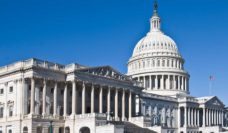On February 7, 2017, Kyle Dropp and Brendan Nyhan published new polling data demonstrating that 35 percent of respondents either thought Obamacare and the Affordable Care Act (ACA) were different from one another or weren’t sure if they were. This finding – which had precedent on late night television comedy sketches – led to astonishment and anguish in the health policy community as GOP deliberations about how to repeal the ACA have begun in earnest.
Unfortunately, public opinion research has consistently found that Americans don’t understand the Affordable Care Act. While passions about the law are strong and polarized – and have been so since the law was signed by President Obama in March 2010 – very few are aware of, or understand, the specific contents of the law.
Why might this be so? After nearly seven years since the ACA became the law of the land, why are Americans simultaneously so passionately opinionated toward, and ignorant of, this enormously influential piece of legislation? My latest research, with collaborators Erika Franklin Fowler and Laura Baum (Wesleyan University), Jeff Niederdeppe (Cornell University), and Colleen Barry (Johns Hopkins Bloomberg School of Public Health) provides at least a few possible answers.
We conducted a comprehensive content analysis of a sample of 1,569 local television news stories about the Affordable Care Act that were broadcast between October 1, 2013 and April 1, 2014. This was the six-month period when Americans first gained the opportunity to purchase private health insurance on the state-based and federal marketplaces or enroll in expanded Medicaid programs in some states. A team of trained research assistants examined the major messages in news coverage, its overall tone, and the information sources cited. Local television news is the most important news source for Americans in general and for new enrollees in particular.
We found that more than half of all the news stories (55%) were somewhat or entirely about politics and political disagreements over the law. The remainder (45%) focused exclusively on health insurance availability. This means that a political message about the law was conveyed in 1 of every 2 news stories a viewer might have seen during this critical stage of the law’s implementation. When we looked at the specific types of messages that were included in news stories, we found that more news coverage concerned the winners and losers relative to the law’s implementation — such as how many people had enrolled to date (in 27% of coverage), or the faulty marketplace web sites (in 33%) — than the substance of how to enroll. In particular, only 7% of news stories mentioned the Medicaid expansion, only 7% mentioned the availability of subsidies to make the cost of insurance more affordable, only 14% presented information about where to go or a number to call for information, and 16% mentioned that there is a penalty for not enrolling.
This drumbeat of political figures featured in news coverage enhances the likelihood that the public would have viewed the law through a political lens.
Supporting the key finding that the bulk of ACA news coverage was politically-oriented , we also found that the most common information sources cited in local news coverage were the White House, the federal government, and elected officials with a partisan label. This drumbeat of political figures featured in news coverage enhances the likelihood that the public would have viewed the law through a political lens. Scholarship in political science on “motivated reasoning” tells us that these are the conditions that render members of the public less likely to learn about the substance of the law, and more likely to maintain their prior beliefs about the law in the face of new information.
Now that GOP efforts to repeal the law loom large, Americans who gained insurance under the ACA (and who benefited in numerous ways from its lesser known policies, from breast feeding accommodations in workplaces to the ending of lifetime and annual coverage limits) face enormous consequences. Our study suggests that the local TV news media – by focusing on politics over the policy substance – did a disservice by not helping Americans become more informed about the law’s components, its consequences for individuals, or even its name. Indeed, we found that while half of local TV news stories referred to the law as the Affordable Care Act, a significant number (39 percent) called the law Obamacare. Those news stories that focused on politics over substance were statistically significantly more likely than insurance-product-focused stories to refer to the law as Obamacare. To the viewing public, then, it’s no wonder that they could have come away with the impression that the political fight and the policy substance were about two entirely different laws.
Feature image: matthrono, Media Vans @ Occupy Boston, used under CC BY-NC-ND 2.0/cropped from original














